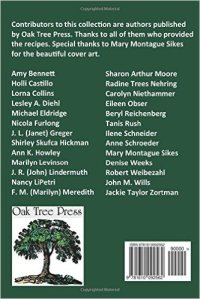Several years ago,
Larry wrote a description of our year living in Chicago, from April 1, 1969 through March 30, 1970. I thought I had posted
it as a blog long ago, but I discovered I hadn’t. So, please enjoy his walk
down Memory Lane.
Background
It was January 1969. I was twenty-four years old, had been
married for three years, and had a daughter eighteen months old. My wife,
Lorna, and I lived in a rented two-bedroom apartment in Alhambra, about five
miles from the Southern California engineering office where I had worked for
the previous three years. But everything was about to change.
Our apartment was on the corner of a busy intersection and
had very little yard and no protective fence. Our daughter, Kim, was walking
and already showed the independence, which would permeate her life. When Kim
played out in the yard, she had to be watched constantly. More than once, we
had to stop her from venturing too close to traffic.
When Doors Close and Open
The family began looking in the Alhambra/San Gabriel area
for an affordable place to live. But most of the available places were beyond
our budget, and those that weren't were not acceptable. We had looked at
properties for weeks and even considered one in a questionable neighborhood in
Rosemead, but finally realized it was not for us and backed out. The situation
seemed like a dead end.
Then in March, my boss called me into his office and offered
a field assignment to build an oil refinery in Joliet, Illinois, near Chicago. It
meant relocating, but the company would pay for moving and provide a partial
housing allowance at the new location. The job also included a premium 10%
field pay increase plus overtime. Under normal conditions, I would probably
have turned it down. Neither Lorna nor I wanted to leave California, our
parents, or, for me, surfing. But, given the circumstances, when it seemed that
all other doors were slammed shut, this door opened to an opportunity we could
not ignore. After a short discussion with Lorna, I accepted the assignment, and
in ten days, we were on our way.
I had only visited the East Coast once on a Boy Scout trip
in 1957, and Lorna had never been out of California. So, for us this was to be
a whole new experience. The furniture was packed, and we were off to Illinois. We
loaded some clothes, diapers, and supplies into our little ’67 Toyota Corona and struck out for
the great unknown.
A Race Across the Country
Our furniture would take about ten days to reach Illinois. To
save a storage fee at the destination, for which we would have to pay, we
needed to have a delivery address by the time our belongings arrived. For us, this
meant no vacation time or dawdling along the way. We had to reach Chicago and
find a place to live immediately. As the Allied moving van left, so did we.
In mid-March, the northern route was still buried in snow,
so we elected to take the southern way through Arizona, New Mexico, a little of
Texas, and then a swing north through Oklahoma, Kansas, Missouri, and finally
across Illinois to Chicago. We estimated five days pushing hard with motel stops
each night. Fortunately the weather cooperated.
We reached the north side of Las Vegas the first night. We
had no time to stop and see the city. Early the next morning, we started out
again and drove to Albuquerque. We alternated driving chores and entertaining
Kim throughout the trip.
Up at sunrise, we hit the road to Amarillo the next day, all
through blue skies. The following morning, the Texas news channel warned of a major
storm hitting Northern California, projected to sweep across the Rocky
Mountains by nightfall. Now, not only were we racing the movers, we would also need
to stay ahead of the storm. That day we pushed all the way to Springfield. Exhausted,
we finally stopped for the night.
Ominous black clouds and big thunderheads to the west
greeted us as we awoke the following morning. A light rain began to fall as we
departed Springfield. After our short lunch break, the weather turned worse. Dark
storm clouds filled the sky, and snow flurries dusted the already wet streets. We
decided to skip the planned dinner stop and drive straight through to Oak Lawn,
a suburb on the south side of Chicago, where we knew several other workers were
staying.
Darkness found us still forty miles from our destination in
a full-on snowstorm. The slush-covered road was slippery and became
increasingly treacherous. The headlights illuminated about twenty feet of road
in front of our trusty little Toyota Corona. The wind-whipped snow sparkled in
the car lights before battering against the windshield. All else was black. Our
plans changed again from reaching our destination to just finding a place of
shelter for the night. Finally, about ten-thirty in the evening, we spotted a Ramada
Inn with a VACANCY sign. No sight was ever more appreciated.
The room rate for Ramada was far above what we had budgeted,
but we had no choice. After settling into our luxurious accommodation, dinner
became the next issue. The motel restaurant, including room service, was
closed. We knew of no local eating places open after ten o’clock. Nor did we
want to venture out again. We finally settled on cokes, Hostess cupcakes, and
candy-bars from the vending machine in the lobby. Not a very auspicious first dinner
in our new home state.
The Apartment
Morning dawned clear and bright. Only the plowed snow banks
along each side of the road gave indication to the carnage of the night before.
We slept in till about ten o’clock, exhausted from the day before and the
constant travel. This day we intended to meet with several of the other field
personnel and their families who had already relocated.
Consulting our AAA TripTik, we discovered it was a good
thing we had stopped the night before as we had missed an important turnpike exit
and were now several miles off course. Retracing our path from the night
before, we were soon on the correct route again. By mid-afternoon, we arrived
at the home of our friends, the Baeza family. Hector, Sarah, and their
children, John and Wendy, had relocated several months before. Hector also
worked on the project.
They had great news for us. The third floor apartment in
their complex was available. It was only one bedroom, but that was all right as
we had not moved our bedroom furniture and planned to sleep on the sofa bed. Kim
would get the bedroom. They called the manager, and he would be by later to
meet us.
Joe, the owner/manager, was a warm and friendly Italian. He
reminded me a little in both looks and temperament to the actor Abe Vigoda. Joe
apologized. The apartment had just been vacated, and he had not yet had the
chance to clean or repaint. We said we’d take it as it was and, if he provided
the paint, we could do the walls ourselves. A handshake sealed the deal.
Our furniture arrived the following week, and we moved in. We
had the third-floor walk-up apartment; the Baezas were on the bottom floor. The
second floor apartment was occupied with a family from Arizona, the Wilsons:
Bob, Carol, and their three year old daughter, Denise. Kim and Denise bonded
immediately.
Next week, learn all about tornadoes, Larry's "side job," and our encounter with The Mob.






















